“Control what you can, to face what you can’t”
– Shantanu Pandit
This article briefly states a few basic level considerations that can guide an organisation’s systematic management of risks in its various programmes.
Risk management in adventure programmes is the process of minimising risk to people and the environment, and maximising the chances of achieving a programme’s goals. Hence we see that there are two types of events that are being referred to here: events that are ‘negative’ are risks, while events that are ‘positive’ are opportunities. We voluntarily take risks when we plan and undertake adventure programmes because of the inherent joys and benefits in them. The trick is to identify, assess and mitigate ‘risks’ so that we reduce the chances of harmful events from occurring and the consequences of an event should it occur. In the context of this article, I am going to primarily focus on the process of identifying, assessing and mitigating risk under the topic of ‘risk management’.
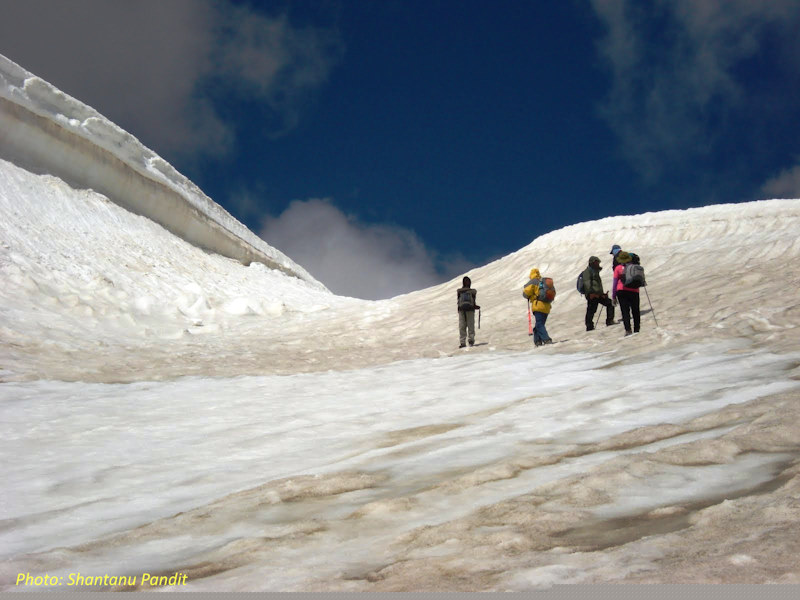
Before we look at how organisations can better manage risk it is important to understand the difference between a hazard and risk.
A hazard is something that can cause harm to people, the environment or equipment/property. ‘Risk’ has many definitions. In the context of outdoor activities ‘risk’ can be simply defined as ‘potential of losing something of value’ (Simon Priest, 2005).
Hazard
There are two kinds of hazards:
- Objective hazards (environmental)
E.g., snow, terrain, weather, darkness, water bodies, animals, etc.
- Subjective hazards (human)
E.g., schedule-related impatience, overconfidence, false information, teamwork-related, etc.
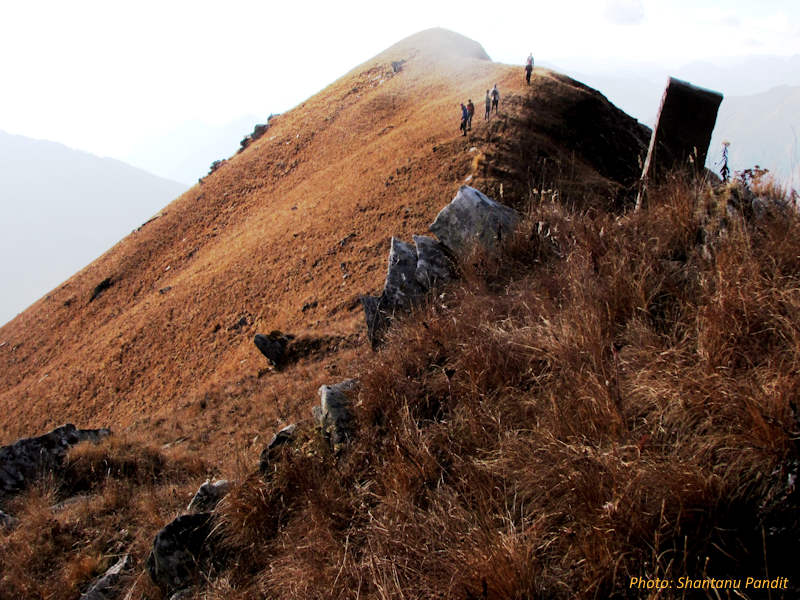
Risk
According to the ‘Dynamics of Accidents Model’ (first developed by Alan Hale) a mechanism like an activity/expedition creates ‘risk potential’:
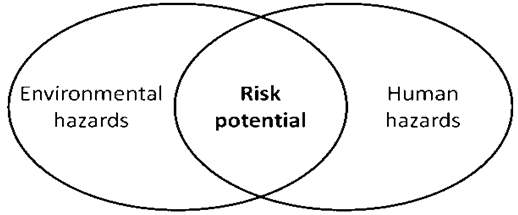
Risk is a function of two factors:
- Likelihood (chances) of mishap happening
- Severity of potential consequences in case of mishap
It is easy to see that, as risk goes down safety goes up and vice versa.
Here, ‘safety’ covers safety of
- People – physical and emotional safety
- Environment – natural and socio-cultural components
- Equipment – appropriate choice, skilled usage and effective storage
Risk management
Risk management involves identifying and assessing risk, and putting in control-measures for mitigating risk so that the risk becomes acceptable
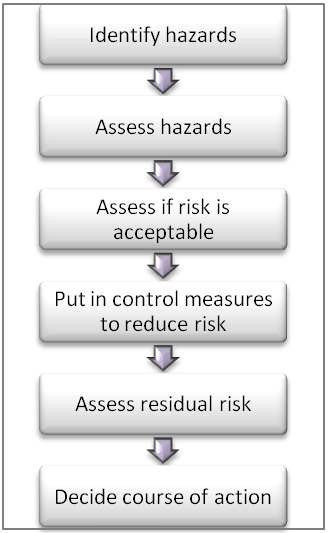
Risk management for organisations undertaking adventure programmes can be considered to happen at two broad levels:
- Organisational level
- Field level
Organisational level
A clearly stated risk management policy articulates an organisation’s goals, approach to risk, comprehensive identification of hazards, risk assessment and evaluation, the systems and processes it has put into place to manage risk and the structure of roles and procedures responsible for implementing safe practices.
A set of documents outlines in relevant degree of detail an organisation’s a) standard operating procedures based on respective standards and guidelines, b) emergency preparedness and c) review processes aimed at continual improvement of overall functioning.
A staff* recruitment, training and retention policy of an organisation enables having competent staff that contributes to achieving the goals of the organisation to the maximum extent possible while reducing losses due to risk. (*Staff refers to leaders/instructors)
An organisation is guided by the following strategies/approaches to risk management:
1. Eliminate risk – bring risk down to zero
E.g., if an allergen is a life threat to a person then remove that person from the environment that has the allergen; change a route to completely avoid one that is deemed to be too dangerous.
2. Reduce (mitigate) risk – decrease severity and/or likelihood
This is where outdoors people mostly function: they end up taking efforts to bring risk to an acceptable level; e.g., build a climbing or rappelling set-up with anchors that follow requisite guidelines like SERENE or ERNEST; choose the appropriate season for a Himalayan route that crosses very high passes.
3. Transfer risk – move it to somewhere else or something else
E.g., transferring risk to an insurance company; risk undertaking signed by participants
4. Accept risk – the reduced level of risk which is unavoidable and acceptable
This is a studied choice that people make: an organisation ensures that the inherent risk that is left after mitigating real risk is in alignment with its goals and capabilities; and it is important to ensure that participants give ‘informed consent’ to be a part of an outdoor programme after they are made aware of key aspects of risk management.
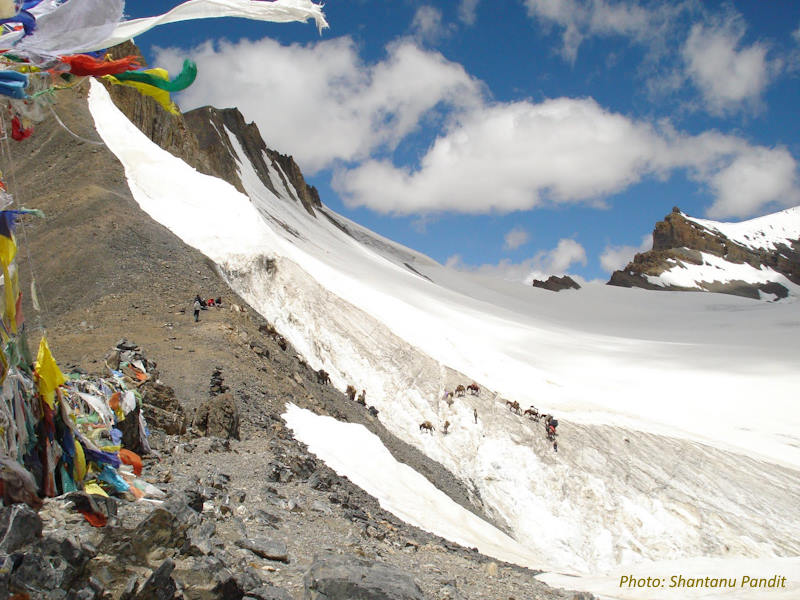
Field level
This is risk management at the point of delivery – where people execute adventure programmes.
It is important that an organisation’s leaders/instructors are suitably competent (i.e., have the required qualification, experience and ability) to conduct an adventure programme with its known parameters. The level of competence should also include the capability of such a leader/instructor to exercise their judgment when dealing with the uncertainties of the outdoors (i.e., deal with non-routine and unexpected situations encountered in the dynamic world of outdoors).

Conclusion
An organisation’s risk management policy in the form of well articulated approach to risk and robust set of documents that include, e.g., SOPs and emergency handling process will make the job of its leaders/instructors very easy and smooth, requiring less effort on their part. At its most basic level this ‘managed safety’ takes care of routine processes and enables people in the field to appropriately respond to non-routine situations including critical incidents. The personal leadership qualities of leaders/instructors enable them to exercise good judgment and take safe decisions.
Hence, it is clear that risk management is best guided by an approach that integrates a) an organisation’s risk management policy and practices and b) sound leadership in the field that involves effective judgment and decision making.
